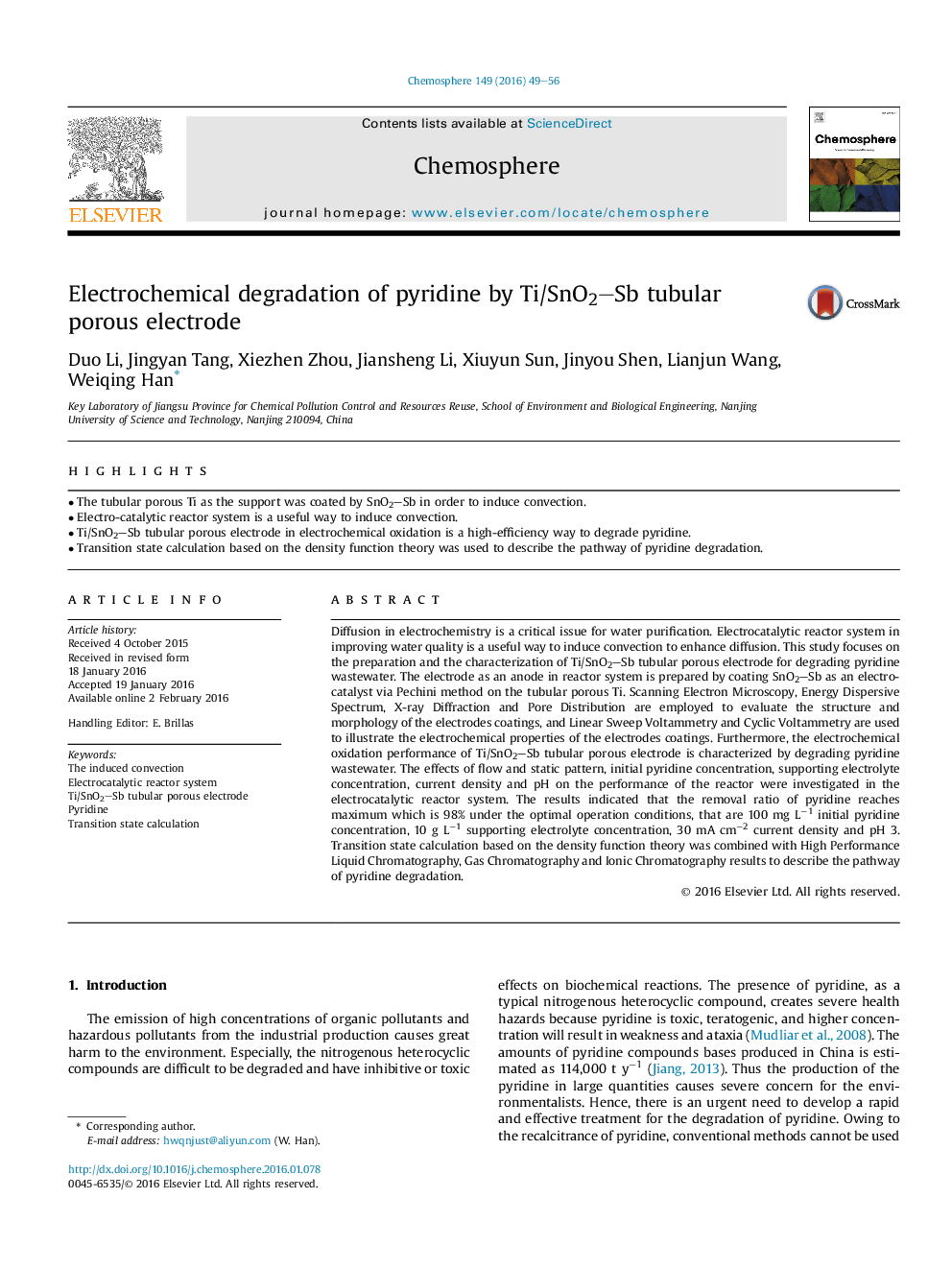| کد مقاله | کد نشریه | سال انتشار | مقاله انگلیسی | نسخه تمام متن |
|---|---|---|---|---|
| 4407873 | 1618822 | 2016 | 8 صفحه PDF | دانلود رایگان |

• The tubular porous Ti as the support was coated by SnO2–Sb in order to induce convection.
• Electro-catalytic reactor system is a useful way to induce convection.
• Ti/SnO2–Sb tubular porous electrode in electrochemical oxidation is a high-efficiency way to degrade pyridine.
• Transition state calculation based on the density function theory was used to describe the pathway of pyridine degradation.
Diffusion in electrochemistry is a critical issue for water purification. Electrocatalytic reactor system in improving water quality is a useful way to induce convection to enhance diffusion. This study focuses on the preparation and the characterization of Ti/SnO2–Sb tubular porous electrode for degrading pyridine wastewater. The electrode as an anode in reactor system is prepared by coating SnO2–Sb as an electro-catalyst via Pechini method on the tubular porous Ti. Scanning Electron Microscopy, Energy Dispersive Spectrum, X-ray Diffraction and Pore Distribution are employed to evaluate the structure and morphology of the electrodes coatings, and Linear Sweep Voltammetry and Cyclic Voltammetry are used to illustrate the electrochemical properties of the electrodes coatings. Furthermore, the electrochemical oxidation performance of Ti/SnO2–Sb tubular porous electrode is characterized by degrading pyridine wastewater. The effects of flow and static pattern, initial pyridine concentration, supporting electrolyte concentration, current density and pH on the performance of the reactor were investigated in the electrocatalytic reactor system. The results indicated that the removal ratio of pyridine reaches maximum which is 98% under the optimal operation conditions, that are 100 mg L−1 initial pyridine concentration, 10 g L−1 supporting electrolyte concentration, 30 mA cm−2 current density and pH 3. Transition state calculation based on the density function theory was combined with High Performance Liquid Chromatography, Gas Chromatography and Ionic Chromatography results to describe the pathway of pyridine degradation.
Journal: Chemosphere - Volume 149, April 2016, Pages 49–56